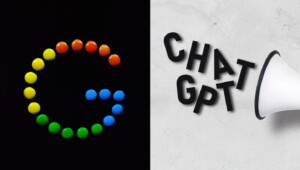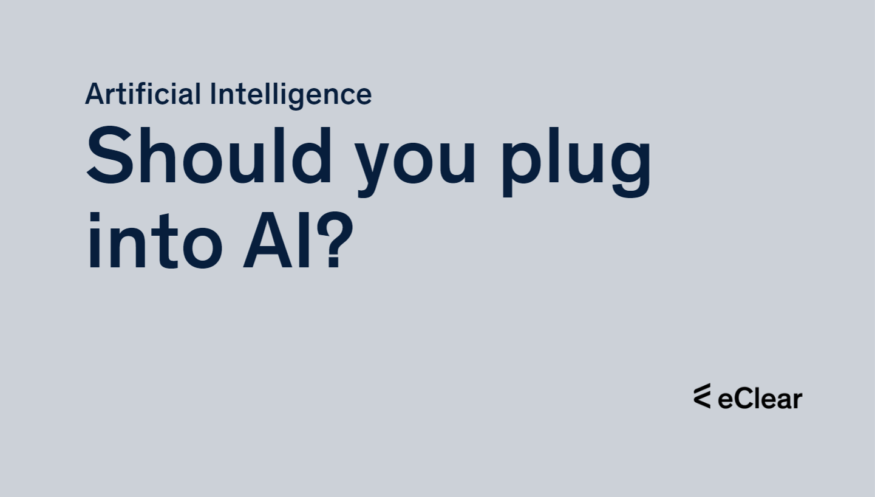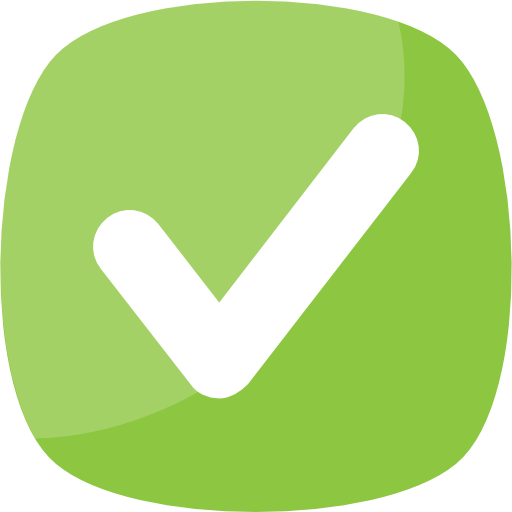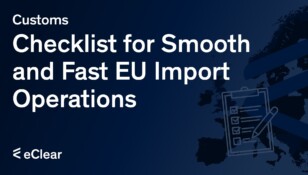Meanwhile, ChatGPT has become an integral part of the modern working world and is being used diligently as a makeshift tool, especially in the text-processing scene – that’s all it is so far! The reactions to the first publication in the press at the end of 2022 were varied, mainly oscillating between hope and fear. While some saw the AI as a helpful companion in the job or a generalising assistant whose results can always be checked, others feared being replaced by ChatGPT or other AI in the medium term.
What is actually behind this bulky name? It is an artificial intelligence chatbot that can understand and generate human texts. This means that ChatGPT can analyse texts and generate suitable responses. The tool is also called generative AI because it can analyse and generate text, speech, and other forms of human communication.
The genesis of ChatGPT began in 2018 when the artificial intelligence research lab, OpenAI, first presented the model. The model was trained on a massive dataset of over eight million text documents and could generate human-like text by predicting the next word in a sentence. Since then, OpenAI has already released two new versions of ChatGPT. Currently, (as of March 2023), ChatGPT 4.0 is the latest version.
Since the launch of ChatGPT in November 2022, there has been an incredible buzz around this tool. Companies are still investigating how to integrate ChatGPT into their marketing. The chatbot can improve customer service and optimise customer interaction.

Let’s briefly consider the many alternatives
Many innovative companies are developing groundbreaking AI tools capable of achieving various outcomes, from graphic design and video generation to interactive reading experiences. Topapps.ai, a specialized search engine, features an impressive list of unique AI tools, such as
Prominent mainstream AI tools include:
Google’s TensorFlow
- Open-source software library
- Building and training machine learning models
Keras
- Open-source library built on TensorFlow
- Higher-level API for model building and training
Facebook’s PyTorch
- Open-source machine learning library
- Known for its dynamic computational graph
IBM Watson
- A suite of AI tools and services
- Catering to various applications
Microsoft Azure
- Cloud computing platform
- Offering AI tools and services
Amazon Web Services (AWS)
- Cloud computing platform
- Amazon SageMaker for machine learning model development
H2O.ai
- Open-source platform
- Building and deploying machine learning models across various industries
Google and OpenAI in AI Competition: Generative Artificial Intelligence Integrated into productivity tools

In addition to the generally accessible and free version of ChatGPT, OpenAI also offers its customers unique versions of the chatbot that are individually tailored to the needs and requirements of the respective company. Unlike voice assistants such as Apple’s Siri or Amazon’s Alexa, ChatGPT is not yet (!) connected to the internet and, therefore, cannot look up and process current information, meaning that the evaluated data records are only valid until 2021. Nevertheless, ChatGPT remains a promising tool for the future of human-like communication with AI.
Research in the field of artificial intelligence is advancing rapidly, and OpenAI is also known for innovations time and again. Compared to its predecessor, GPT-4 has improved capabilities that allow the chatbot to accept images and text as input for the first time. OpenAI calls this the chatbot’s “multimodal” capability. The image-to-text feature is still in research preview while OpenAI conducts further security testing. The system will generate text as output and is said to be able to, among other things, create a recipe based on images of ingredients present in the fridge or generate a packing list for a trip from a photo of the wardrobe.
However, OpenAI’s announcement did not come without competition: A few hours earlier, Google announced it would integrate generative AI into its productivity tools such as Gmail, Google Docs, or Google Spreadsheets. Again, this is a chatbot capable of generating human-like text. But how can companies use ChatGPT and similar tools for their daily marketing and strategic branding work?
Integration of ChatGPT in applications and platforms
OpenAI is developing a ChatGPT plugin technology to integrate the chatbot into various applications and platforms. With this plugin, companies and developers can seamlessly integrate ChatGPT into their systems and services to ensure an improved user experience and more efficient communication. In doing so, the plugin can be adapted to the specific needs of each project to provide the best possible support for various tasks such as customer support, content creation or internal communication processes.
ChatGPT can enable real-time, human-like, text-based interactions in various use cases through this integration, increasing efficiency and productivity.
Possible areas of application of the ChatGPT plugin
E-mail and messaging applications: ChatGPT can be integrated into e-mail clients or messaging apps to help users formulate e-mails or messages. The chatbot can suggest suitable answers, or text modules enable faster and more precise communication.
Content creation: Integration of ChatGPT into a word-processing or content management systems to help writers and editors create articles, blog posts or marketing copy. The chatbot can generate ideas, headlines, or even entire paragraphs of text as a starting point or inspiration.
Project management tools: Integrate ChatGPT with project management software to help teams organise, plan, and execute projects. The chatbot can propose prioritising tasks, allocating resources, or identifying potential risks.
Text and data analytics: ChatGPT can be integrated into analytics tools to analyse large amounts of text or data and generate valuable summaries or insights.
Language and translation support: Integration with language learning apps or translation tools to help users learn a new language or translate texts into different languages.

Let’s have a closer look at this with the example of Customer Support
Chatbots are no longer a vision of the future but are already used today in many areas. Chatbots such as ChatGPT can also be used in customer support. Thanks to ChatGPT, companies can communicate automatically with their customers and answer questions. This provides the advantage that the response time is significantly reduced, and that basic service problems can be solved effectively. This reduces the number of customer dialogues and increases customer satisfaction. In addition, customer service staff can concentrate on more complex support issues and are thus relieved.
But ChatGPT can do even more: the tool can also be used in marketing to gain valuable customer insights. ChatGPT can generate human-like texts and understand and interpret human language. By analysing customer feedback, reviews, ratings, and comments on social media, ChatGPT can gain important insights into customer satisfaction and mood. This data can be categorised and analysed to understand better what customers like about a product or service and which areas should be improved. Competitors’ products, services, and brands can also be interpreted this way.
ChatGPT is thus a true all-rounder and can help companies better understand and serve their customers. But beware: a chatbot cannot fully capture human emotions and needs. Therefore, ChatGPT should only be used to supplement human customer service. Especially when it comes to more complex processes, emotionally charged, AI quickly reaches its limits. One example is the sometimes-heated customer dialogue at telephone companies, especially regarding billing issues. Keyword goodwill:
The limits of artificial intelligence using the example of “Goodwill”
How does the machine define Goodwill? ChatGPT answers the question “What is the definition of goodwill” as follows:
“Goodwill is a term from the field of customer service. It refers to a company’s voluntary service beyond legal or contractual obligations. In doing so, the company understands the customer’s situation. It offers him a specific service for purely customer-oriented reasons to achieve or maintain customer satisfaction. Goodwill is thus a concession by the company to satisfy the customer or to help him in a difficult situation. It is a voluntary measure that is not legally prescribed and is not based on a contractual agreement. Goodwill can, for example, consist of a company granting a discount, replacing a defective item free of charge, or offering a service at no additional cost. Thus, Goodwill is essential in customer service to maintain and strengthen customer relationships. It also indicates that the company is willing to go beyond what is legally or contractually required to satisfy the customer or win their loyalty.”
Inevitably, this raises whether and how machine learning can even understand the concept of Goodwill. And how AI can apply Goodwill in practice, and Goodwill only serves as a placeholder and illustrates AI’s limits.
Is it time for “digital ethics”?

Today’s technology is used in every aspect of life. Technology significantly impacts our daily lives, from how we communicate to how we organise our lives. Amid this technological advancement, business information scientist Sarah Spiekermann already emphasised the importance of digital ethics for the future in 2019.
Spiekermann calls for a “digital ethics” that regulates how we deal with the technology of the future. This demand refers to protecting privacy, data and information, and technology companies’ transparency. It is also about considering the consequences of technology for society and ensuring that technology is never used to harm people. An essential aspect of Spiekermann’s call is the protection of privacy and personal data. In an age where companies collect and analyse our data, it is crucial that the use of this data is transparent, and that users’ privacy is protected. Transparency from technology companies is also vital to ensure that users understand how their data is being used and who has access to it.
Similarly, the impact of technology on society must also be considered. Technology companies must ensure that their products and services benefit society and not harm anyone. Above all, it is vital to ensure that technology does not jeopardise social justice but helps promote it.
Spiekermann’s calls for digital ethics are crucial to ensure that future technology aligns with society’s values and needs. However, there are also potential challenges in implementing these demands. Some tech companies may resist the demands, especially regarding transparency and data protection. There is also a risk that too much regulation will hinder innovation and make companies less competitive.
Despite these challenges, Spiekermann’s demands must be taken seriously to ensure that future technology is in line with the needs of society. The creation of digital ethics is a crucial step in this direction. It will help to ensure that future technology is used safely and effectively. Indeed, these are questions that move us in times of rapid developments in AI. And even though they are currently the subject of lively discussion, we want to focus on the immense opportunities that come with the integration of ChatGPT as a plugin.
Not everything is possible: the limitations of ChatGPT and Artificial Intelligence
ChatGPT, like other AI systems, has some inherent limitations despite its impressive capabilities. These limitations relate to aspects such as understanding context and nuance, emotion and empathy, the currency of knowledge, complex problem-solving, creativity, ethics and bias, human supervision, and the absence of “General AI” (General Artificial Intelligence (AGI) refers to a type of AI that can perform any intellectual task that a human being can do, possessing a broad understanding and adaptable cognitive abilities. It is essential to recognise these limitations to keep expectations of AI systems realistic and to use them effectively and responsibly.
Ethics and bias: AI systems may adopt and propagate the biases and stereotypes present in the training data. This can lead to unethical or discriminatory decisions.
Lack of understanding of context and nuance: AI systems can have difficulty fully grasping the context and nuances of human communication. The irony, humour and subtle meanings can be complex for them to understand.
Lack of emotion and empathy: AI systems cannot feel emotion or empathy, and therefore have difficulty adequately recognising and responding to people’s emotional states or needs.
Timeliness of knowledge: Since ChatGPT is trained on textual data dating back to September 2021, the system cannot process information about events or developments after that date.
Limited ability to deal with complex problems: AI systems may need help to provide practical solutions to complex problems or situations that require deep understanding and expertise.
Lack of creative problem-solving: AI systems are limited in their ability to solve problems creatively because they are based on the data and patterns they have learned during training.
Dependence on human supervision: AI systems still require human supervision and intervention to produce accurate and appropriate results despite their advanced capabilities.
Lack of General AI: ChatGPT is an example of a narrow AI specialising in specific tasks. It cannot perform diverse and complex tasks that require human-like understanding and learning, as would be the case with General AI.
Conclusion: ChatGPT is a revolutionary plugin with potential and limitations
ChatGPT undoubtedly has the potential to change how we interact with text and communication fundamentally. The integration of ChatGPT as a plugin into various applications and platforms offers companies and individuals many new possibilities to increase efficiency and productivity in areas such as customer service, content creation or internal communication processes.
At the same time, it is crucial to be aware of the limitations of AI in general. AI can reach its limits in emotionally charged or more complex situations, and human intervention remains essential. The discussion around digital ethics and the responsible use of technology shows that we must be aware of the potential challenges and consequences.
The future of ChatGPT is undoubtedly promising, but it is up to us to ensure a balanced and responsible use of this technology. Integrating ChatGPT as a plugin is an exciting step into the future of AI-assisted communication. Still, it should always be done hand-in-hand with human expertise and empathy. In this sense, it is not the end of Google, but rather a complement and extension of our communication tools that can help us work more efficiently and successfully.
Let’s stay in touch!
Stay up to date on the latest market trends, best practices and regulatory changes affecting cross-border trade by following us on LinkedIn.








